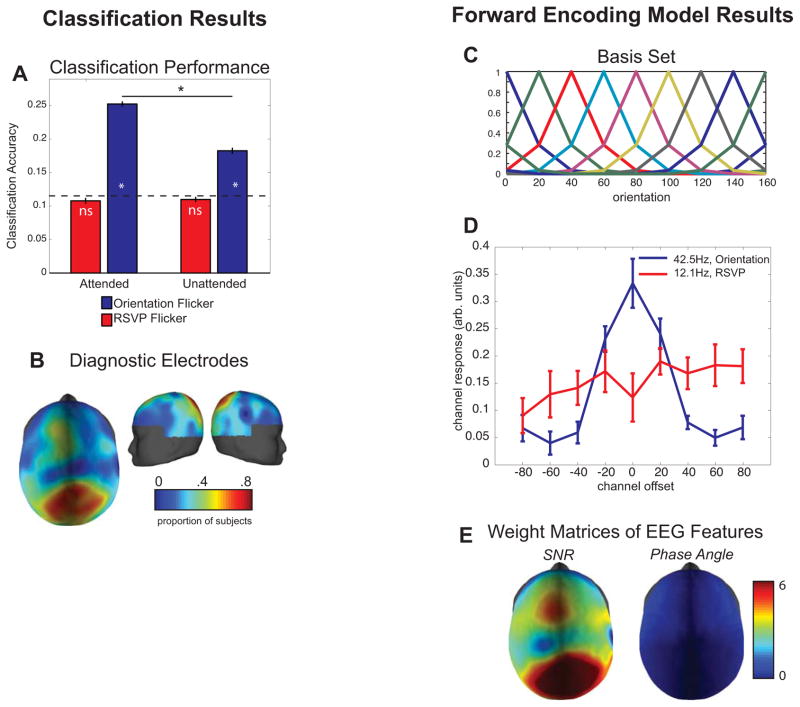Figure 2.
(A) Linear discriminant classification results. For each subject, the SNR and phase of a subset of electrodes elements was used for the classification procedure, and the peak of the classification function was used as that subject’s classification performance (see Supplemental Figure 4 and Supplemental Methods). The orientation of the grating could be decoded above chance (p<0.05) based on the SSVEP response at 42.5Hz (Figure 2A, blue bars), and decoding accuracy was higher when the grating was attended compared to when it was not attended. In contrast, the orientation of the peripheral grating could not be decoded based on the SSVEP response at 12.1Hz (red bars). The dotted line represents chance performance in this 9-way classification, and error bars represent standard error of the mean across subjects. Asterisks indicate significant differences via a bootstrap procedure (see Supplemental Experimental Procedures). (B) Diagnostic electrodes in the linear discriminant analysis across subjects: the colormap of the topographic plot shows the probability that an electrode was used in the decoding analysis. The electrodes that contained the highest SNR (Figure 1C) were also the most diagnostic. (C) Basis set used in the forward encoding model, derived from half-sinusoidal functions raised to the sixth power (9 basis functions spanning 0°–160° in 20° steps). (D) Dynamic tuning functions derived using the forward encoding model based on SNR and phase angle of the SSVEP response before the target onset. The 12.1 Hz SSVEP response to the RSVP flicker does not produce tuned responses whereas the 42.5Hz SSVEP response produces a tuned response that peaks at the angle of stimulus being viewed (which is 0° in this plot by convention). Error bars represent standard error of the mean across subjects. (E) Average weight of the maximum channel response showing that the SNR of the parietal-occipital electrodes and, to a lesser extent the phase angle of the frontal electrodes, carries most of the orientation-selective information.

